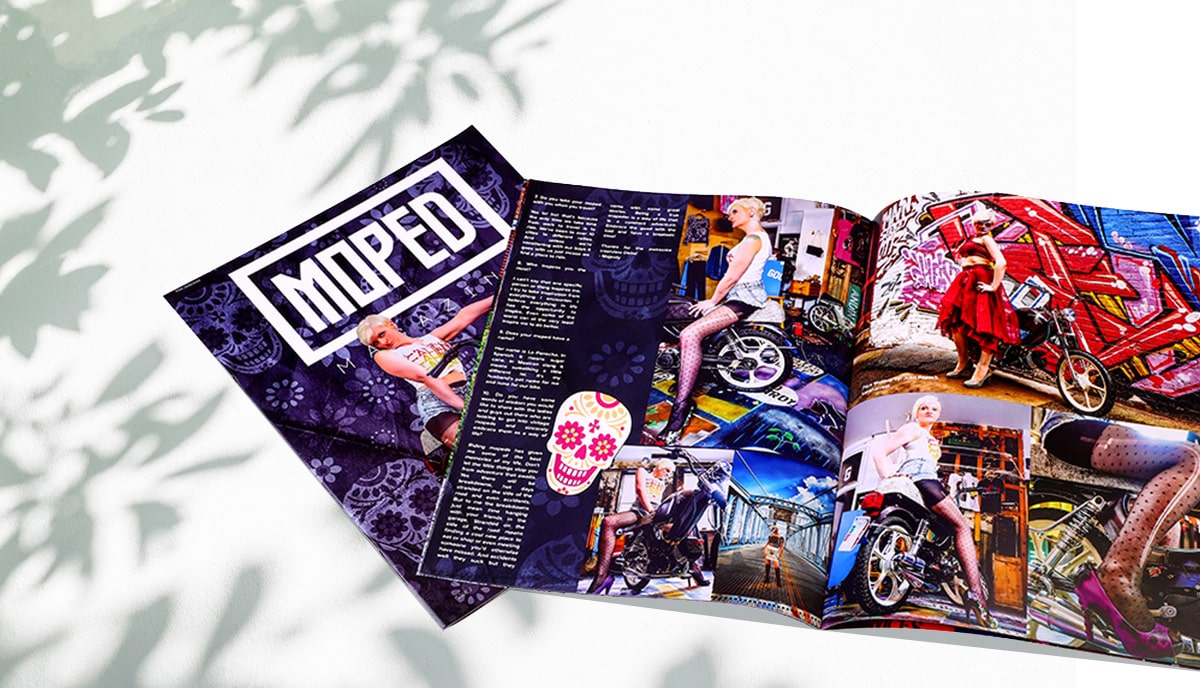The essential steps to creating a successful magazine that readers trust and enjoy

Magazines are a powerful way to promote your business, turn a passion project into reality, or connect with like-minded enthusiasts. But what sets a successful magazine apart from the rest? While great design, compelling content, and high-quality printing matter, the secret lies in combining these elements with a thoughtful approach. Based on over 25 years of experience in the printing industry, here are the essential ingredients for creating a magazine that captivates readers and stands the test of time.
1. Start with market research
Every successful magazine begins with understanding its audience. Before diving into design or content creation, invest time in market research. Who are your readers? What are their interests, age groups, professions, and spending habits? Knowing these details helps you craft content they'll love.
Market research might sound intimidating, but it's simpler than it seems. It's about defining your niche and tailoring your magazine to fit it. Whether your audience is fitness enthusiasts, tech professionals, or hobbyists, this foundational step makes sure your magazine appeals strongly to its readers.
2. Define your voice and style
Your magazine's voice and style are its personality. They set the tone and build a connection with your audience. Browse through a few magazines at a newsstand, and you'll notice each has a unique way of communicating. This voice shapes everything — editorials, features, imagery, and even advertisements.
To find your voice, experiment with content that appeals to your target audience. Think about the tone — playful, authoritative, conversational? Combine this with a visual style that aligns with your message, creating a cohesive look and feel your readers will instantly recognize.
3. Balance content and design
Content and design are like two sides of the same coin — you can't prioritize one over the other. Compelling content draws readers in, while great design makes that content engaging and easy to digest.
Your design choices, from color schemes to typography, should enhance your content rather than overshadow it. Similarly, your content should complement the design by fitting seamlessly into the layout. When these elements work in harmony, your magazine will be both visually appealing and enjoyable to read.

4. Build credibility with authority
Readers trust magazines that provide reliable, well-researched information. To establish authority, collaborate with expert writers or ensure your content cites credible sources. Accuracy and depth matter, especially if your magazine covers technical or niche topics.
Authority isn't just about expertise — it's also about consistency. Your readers should feel confident that they're getting valuable, trustworthy content with every issue. This trust keeps them coming back and recommending your magazine to others.
5. Mix familiarity with freshness
A successful magazine strikes a balance between consistency and novelty. Regular sections or features give readers something familiar to look forward to, while new content keeps things exciting.
Introduce fresh perspectives through guest writers, topical stories, or surprising features. If your audience enjoys a bit of debate, don't shy away from publishing thought-provoking or controversial pieces — just make sure they align with your readers' interests and values.
6. Make it easy for readers to connect
Engagement is key to building a loyal readership. Make it simple for readers to reach out, share feedback, or comment on your content. Include clear contact details — like your business address, email, website, and social media handles — on your magazine's inside pages.
Encouraging interaction creates a sense of community and helps you understand what your audience values. As your magazine grows, this feedback can guide future content and design choices, keeping your readers engaged and satisfied.
7. Foster teamwork and shared vision
Behind every successful magazine is a team united by a common vision. Even if you're a solo entrepreneur, you'll likely need to collaborate with writers, designers, photographers, and printers. Clear communication and shared goals ensure everyone contributes effectively.
From the start, involve your team in shaping the magazine's purpose, target audience, and creative direction. When everyone is aligned, the result is a cohesive, high-quality product that readers love.
Thanks for reading! We hope these tips inspire you to start your own magazine or take your existing one to the next level. Based on over two decades of experience working with businesses, nonprofits, and independent creators, we've seen countless magazines succeed — and a few falter. The ones that thrive consistently follow these principles. With careful planning, creativity, and collaboration, yours can too.
Talk to us! We're here to help.
At QinPrinting, we've been helping creatives just like you to develop and print successful magazines for over 25 years. Our list of repeat-buying clients — many of whom have held active accounts with us for over a decade — are testimony to the effectiveness of our high-quality print products and the quality of our customer service. Get in touch today to discuss your print magazine needs and request a competitive, no-obligation quote.
Shoot us an email to [email protected] or call us on +1 951 866 3971 (remembering potential time zone differences!) and we'll be delighted to discuss your needs, answer questions, and help in any way we can. We can't wait to contribute to your magazine's success.










